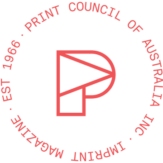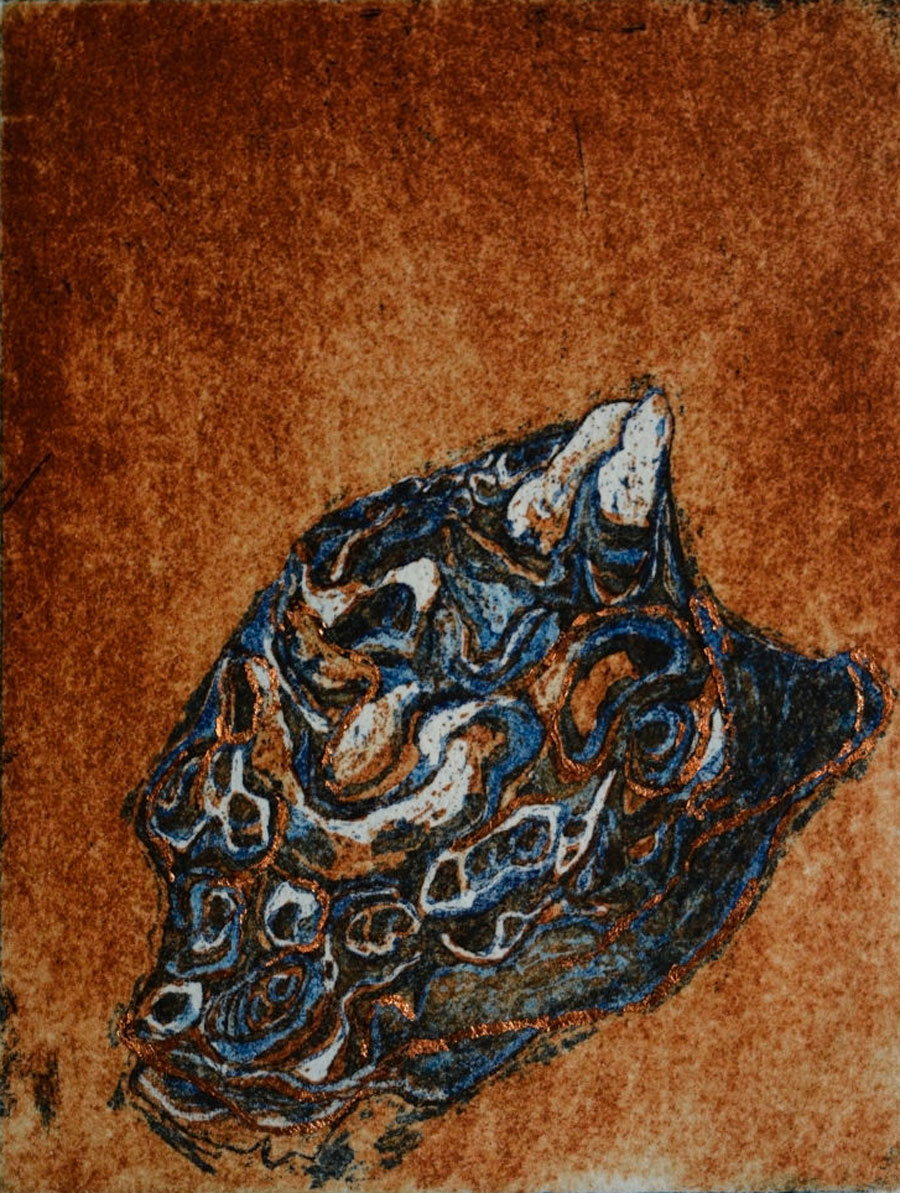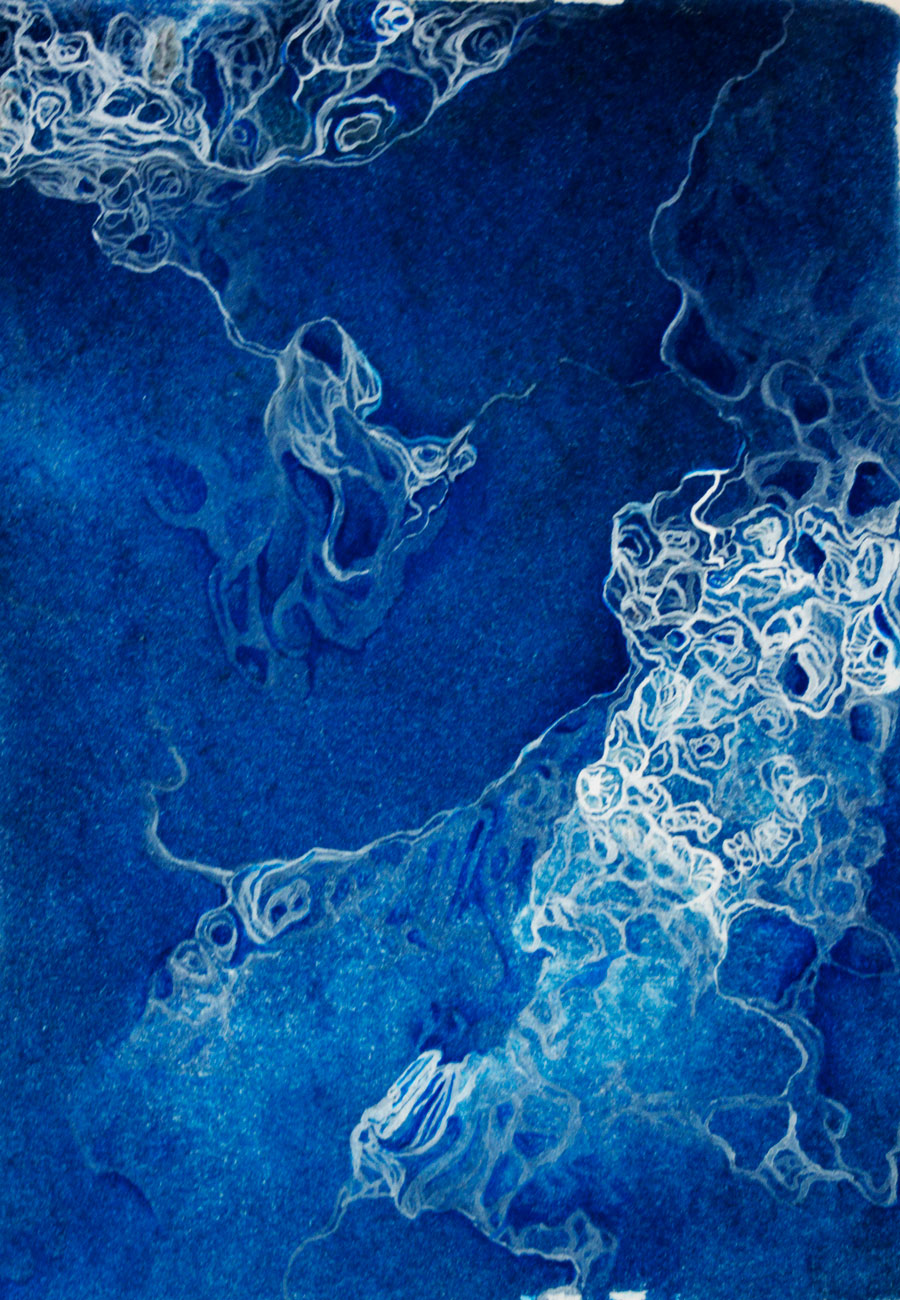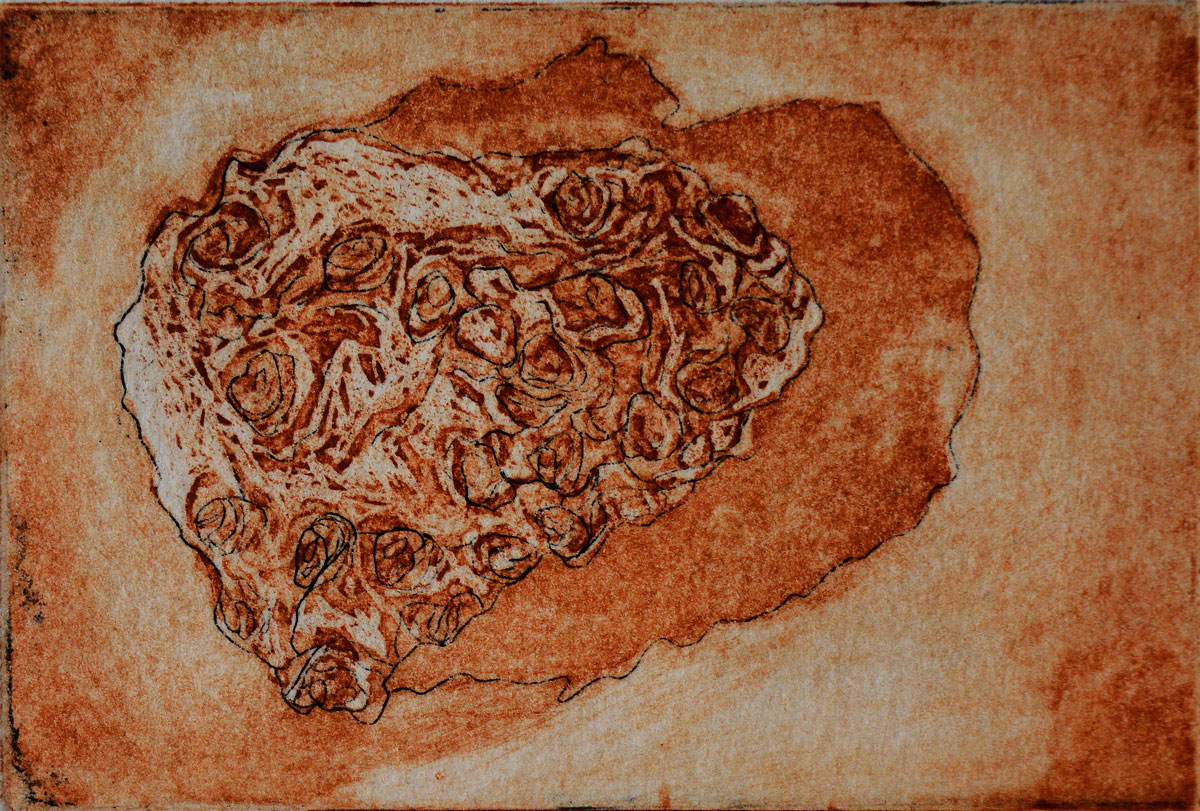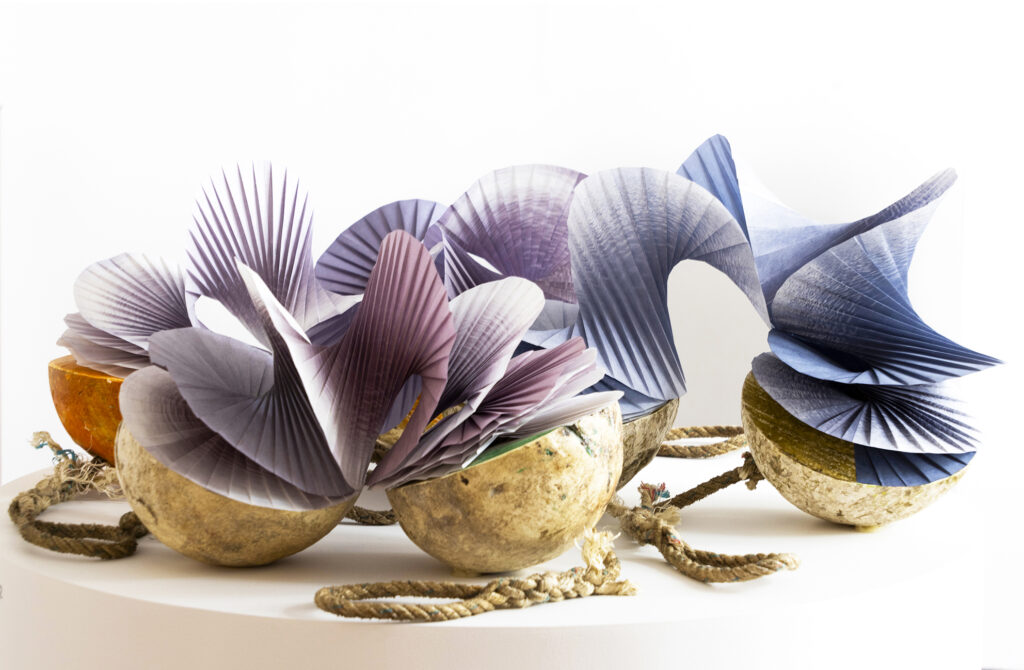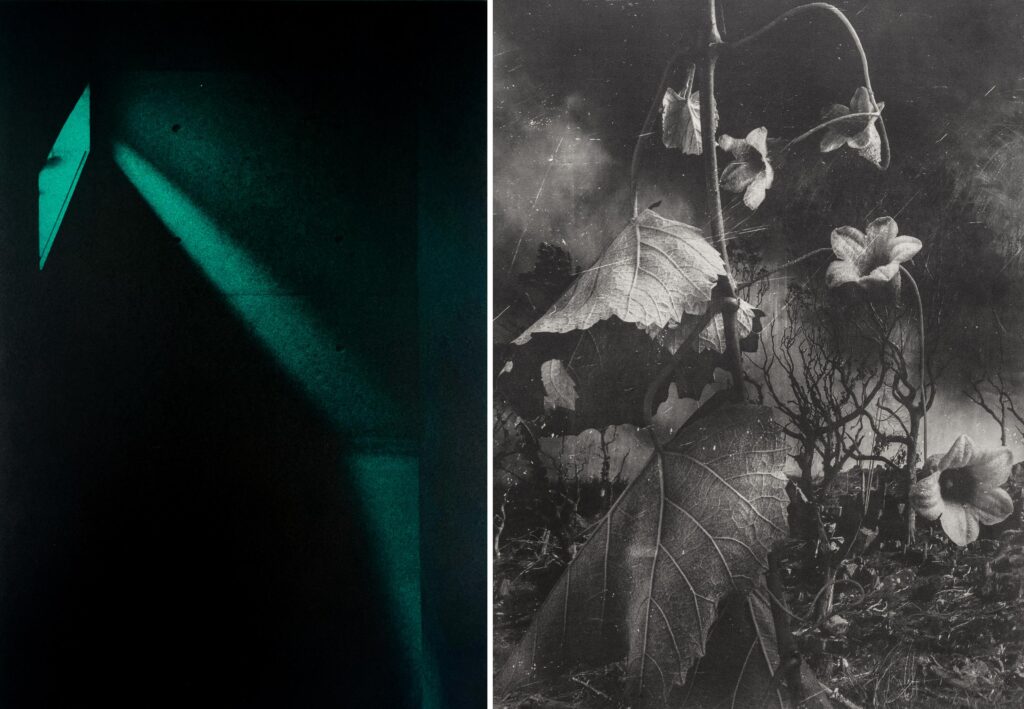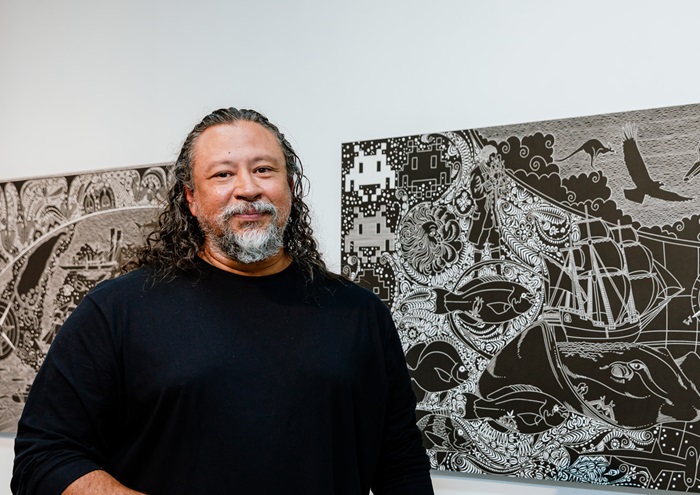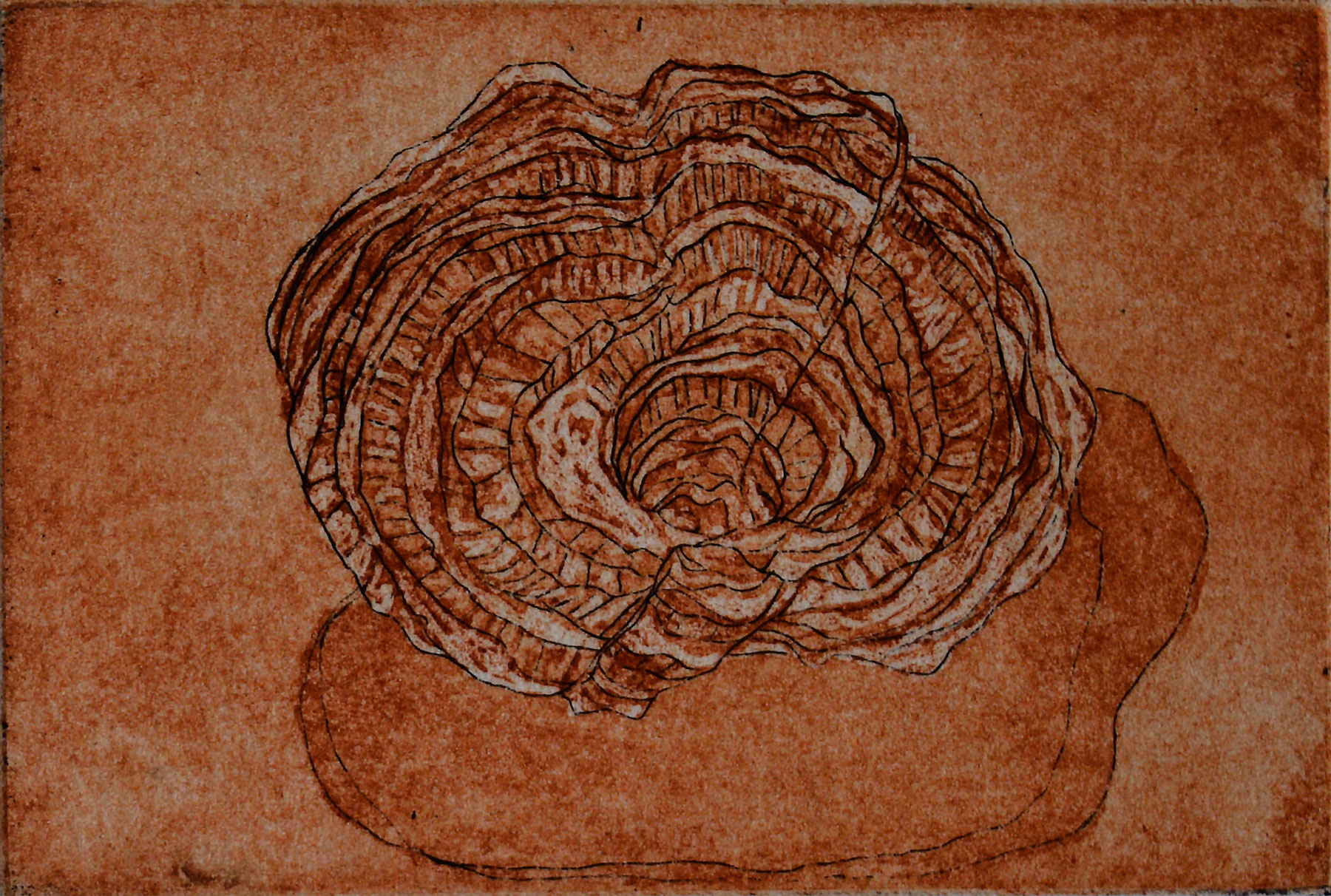
Elaine Camlin:
Micro-Worlds
Elaine Camlin discusses her investigations of the minutiae of the organic world. Micro-Worlds is at Form Studio and Gallery until 18 March.
February 26, 2018
In Interviews,
Printmaking, Q&A
Imprint: What is the premise for this exhibition and how have you been working towards it?
Elaine Camlin: The underlying theme in my art practice is the ephemeral nature of growth and decay and the vital role of regeneration in our environment. Over many years, I have collected and documented a variety of organic objects – from livestock skeletons and nests, to seedpods and fungi. In recent years there has been an obvious shift of interest in my practice. Although the objects in my studio remain the same, my interpretation and appreciation of these objects has changed. The static objects have grown, as I have, and they are constantly reimagined. The very idea of reimagining objects to create new ideas, new forms and most of all new worlds is the catalyst of this body of work.
To prepare for this exhibition, I have worked from three studio spaces. The majority of preparatory work is created at my home studio when my Husband and toddler are asleep. Once I am ready to etch, I travel across to Canberra to visit Megalo, where I usually put in a few intensive days to prepare my plates. I value my time at Megalo, as this is the time I am surrounded by likeminded creators, and I can have a dialogue with experienced printmakers. To edition the prints I work from my own press, located at The Makeshift Studio – the name I give to the corner of my parents showroom I have monopolised. My press, inking station and drying rack, all live between two shower screen displays.
Imprint: What are some of the foundation ideas for the work in the exhibition, and what are visitors likely to experience?
EC: The foundation for Micro-Worlds was to create a suite of new objects that map the discovery of an ‘unknown’ yet vaguely familiar world. This exhibition documents and explores the nuances and intricacies of organic objects. The microscopic forms, which have been created intuitively, are influenced by personal moments, memories and reflections over time. There is an obvious departure away from realistic or immediately identifiable forms, however, the works evoke feelings of familiarity.
The objects, primarily documented through small prints, are precious, yet intangible, traces of personal musings. Many of the works are microscopic, and require a close investigation to reveal the subtle marks and textures. I hope that this close engagement will encourage visitors to view the objects subjectively, to discover and uncover new forms familiar to them, impacted by their own personal history.
Imprint: How was the work developed technically and what were some of the challenges involved?
EC: The exhibition includes a range of printmaking, drawing and sculptural works, explored as a form of documentation. The body of work begins with a series of observational graphite drawings based on a variety of collected objects. From here, I usually reconstruct, simplify and alter the forms to create linear drawings suitable for line etchings.
Micro-Worlds consists of a suite of two-plate intaglio prints that have been etched with inconsistent aquatints and have been burnished and printed in multiple stages. My aim was to enhance the textural qualities of the image, and to evoke the feeling of an archaeological discovery, and uncovering of new objects. This process was challenging, as I had to relinquish control, and allow the acid to do its thing, leaving much of the background to chance. It was quite an uneasy process proofing the prints for the first time, not knowing what to expect.
Moving from micro to macro, I have also developed large scale cyanotypes and linocuts which document spatial investigations and typographic contours. Developed in a similar method to the small intaglio prints, these works are also based on my personal interpretations of organic forms. The linocut has been carved and printed in stages, until the form grows to fill the full block. While the cyanotype was created by exposing a large sheet of Fabriano, and then the acetate drawing was cut and exposed again to develop shrinking forms. My biggest challenge with these works was developing large scale images which maintained the same intricacies as the smaller pieces, while still working as a whole composition.
There are also a number of objects in the exhibition, including small drypoints, which have been printed, and displayed as scientific slides and handmade paper clay fossils.
Imprint: What future projects are you working on?
EC: At the conclusion of this exhibition, I will be launching into a new series of work based on the wetlands in the Riverina Region. The first in the series will focus on the environment at Fivebough & Tuckerbil Wetlands in Leeton. The prints will be exhibited nationally from October as part of the Overwintering Project: Mapping Sanctuary, which has been curated by Kate Gorringe-Smith.
I am also working on a solo installation, Seed Pods- Structures of Growth, which will be displayed at the Window Gallery, Eastern Riverina Arts in September. This installation will feature over 100 small papier-mâché forms, that have been built up using printed tissue and rice papers.
Micro-Worlds: Interpretations & Observations of Organic Forms is at Form Studio and Gallery, 1/30 Aurora Avenue Queanbeyan until 18 March, opening 1 March at 6pm. www.formstudioandgallery.com.au
